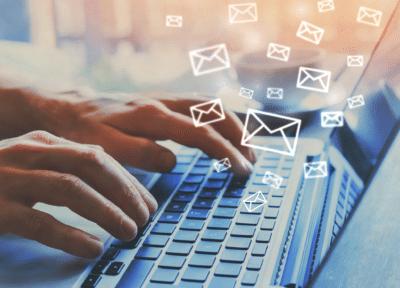Summary
The transition from paper to digital mail can be transformative for an office. Didlake Document Imaging offers digital mailroom services to its clients.

In today’s digital world, it is easy to forget that businesses still receive physical mail. With increasingly complex and dispersed configurations, it’s essential to have a system in place to ensure the whole team receives their mail. This can be a logistical challenge if relying on the old-fashioned clerk with a wire basket cart, weaving among the office desks and putting mail into individual inboxes. After all, offices with multiple locations and flexibility about working from home still need to process incoming mail and distribute relevant mail to entire teams instead of individuals.
Enter the digital mailroom. Rather than distribute the physical paper, a digital mailroom will digitize the incoming mail and distribute it to the recipient’s email inbox. This has various benefits:
- It reduces the accumulation of paper for the organization – not to mention keeping desks clean;
- It minimizes the chance of losing the item on a cluttered desk;
- Multiple recipients can receive the same piece of mail; and
- A digital mailroom can be integrated with a centralized document management system.
Having a digital mailroom is more complex than replacing the mailroom with a scanner. To succeed, the digital mailroom must be planned and updated with processes to address the organization’s needs. Here are some essential elements to include.
1. Decide Where the Digital Mail Will Go
A basic scan-to-email system that loses track of the mail once it has landed in an inbox does not constitute a document management system. The digitized mail must be identified, processed and stored securely to give the individual recipients notice and access. However, the organization retains the mail as well. Including metadata like date, recipient and department allow the mail to be retrieved as needed. The mailroom staff needs to be trained in properly recording the information as part of processing.
2. Plan to Transition Your Document Classification
With physical objects, there are many ways to sort documents, and the digital world adds to the mix. Instead of the named recipient reviewing and sending the mail to the file room, the digital mailroom allows instant classification. Whether it’s by department, client or some other method, you need to make sure your protocol directs the mail into suitable buckets so that it can be retrieved in the future.
3. A Whole World of Data is Available
A scanner generally transforms a document into a .pdf. Even the most basic systems can create a single document out of a series of pages that can be labeled with an evocative title and the date the pdf was created. But, a digital mailroom can do so much more. For example, a law firm can set up protocols to indicate whether the mail is a letter, a pleading or some other type of document. Invoices can be identified by invoice number, vendor and due date. This increases the efficiency of processing all mail as the metadata can be directed to other systems like a litigation calendar program or the Accounts Payable software.
4. Maintain Your Digital Mailroom
When you first decide to go digital, you will likely invest in state-of-the-art technology. But, like any technology, it needs to be maintained, updated and occasionally replaced to ensure you are utilizing the most efficient and effective mail processing method. You can keep track of the system’s effectiveness – hardware, software and processes – and regularly consider changes to get even more out of it.
5. Plan for Confidentiality
Depending on the business, confidentiality must be considered part of your digital mailroom protocols. Sequestering specific documents, encrypting them in accordance with applicable requirements (e.g., health records require particular protocols), making sure they don’t get placed with the regular mail and training your digital mailroom staff in proper handling and disposal of the documents can be critical to compliance. Encrypted documents still need to be accessible to authorized readers, so password protocols also need to be in place.
The transition from paper to digital mail can be transformative for an office. It is particularly useful for high-volume document management, maintaining confidentiality and managing distribution to a dispersed workforce. A digital mailroom can also be used by individuals who receive a lot of mail (e.g., celebrities can manage fan mail) or who don’t have a fixed address (e.g., RVers or snowbirds). Planning and strategic implementation can allow for paperless processing and increased efficiency.
Didlake Document Imaging offers digital mailroom services to its clients. It can manage the receipt and distribution of mail from its facilities, eliminating the need for physical space on the premises. With over 30 years of experience in mail services, Didlake offers its expertise to make your digital mailroom as effective and efficient as possible. Contact us today to learn how we can help.

